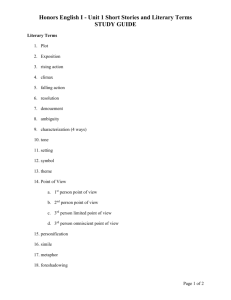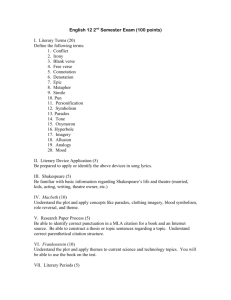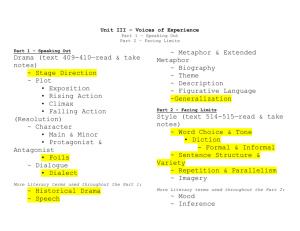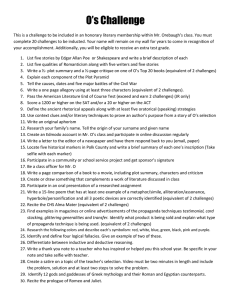MIDTERM REVIEW
advertisement
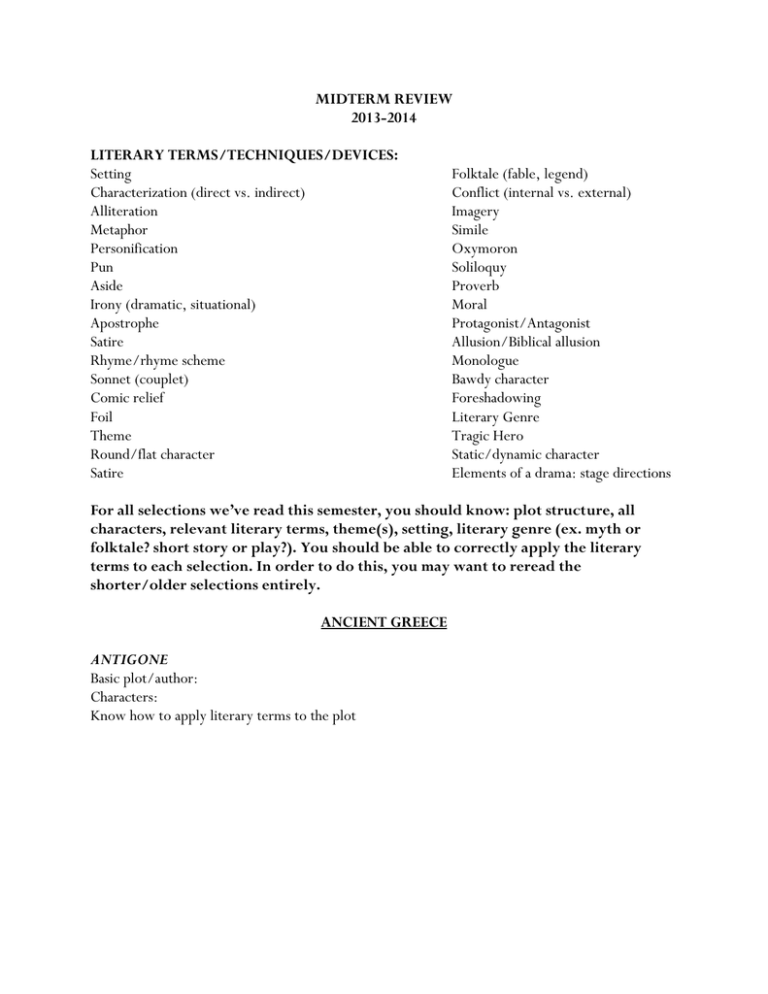
MIDTERM REVIEW 2013-2014 LITERARY TERMS/TECHNIQUES/DEVICES: Setting Characterization (direct vs. indirect) Alliteration Metaphor Personification Pun Aside Irony (dramatic, situational) Apostrophe Satire Rhyme/rhyme scheme Sonnet (couplet) Comic relief Foil Theme Round/flat character Satire Folktale (fable, legend) Conflict (internal vs. external) Imagery Simile Oxymoron Soliloquy Proverb Moral Protagonist/Antagonist Allusion/Biblical allusion Monologue Bawdy character Foreshadowing Literary Genre Tragic Hero Static/dynamic character Elements of a drama: stage directions For all selections we’ve read this semester, you should know: plot structure, all characters, relevant literary terms, theme(s), setting, literary genre (ex. myth or folktale? short story or play?). You should be able to correctly apply the literary terms to each selection. In order to do this, you may want to reread the shorter/older selections entirely. ANCIENT GREECE ANTIGONE Basic plot/author: Characters: Know how to apply literary terms to the plot THE RENAISSANCE Shakespeare- Romeo & Juliet Know how to apply literary terms to the play Plot Characters Sonnet form Themes THE ENLIGHTENMENT Voltaire – Candide Basic plot/purpose Voltaire vs. Leibnitz Voltaire’s belief on religion, government, justice system, free will, view of world, equality Use of satire, techniques IMPERIALSIM IN AFRICA Achebe- Things Fall Apart Plot (elements) Characters Rituals/Role of rituals Themes Author’s goals WRITING Overall organization/structure of paragraphs and essays MLA Format Grabber Thesis statements Topic sentences Clincher Integrating quotes Citing quotes Transitional words/phrases: purpose & examples GRAMMAR Parts of Speech 6 Comma rules Apostrophes Passive vs. Active Voice



